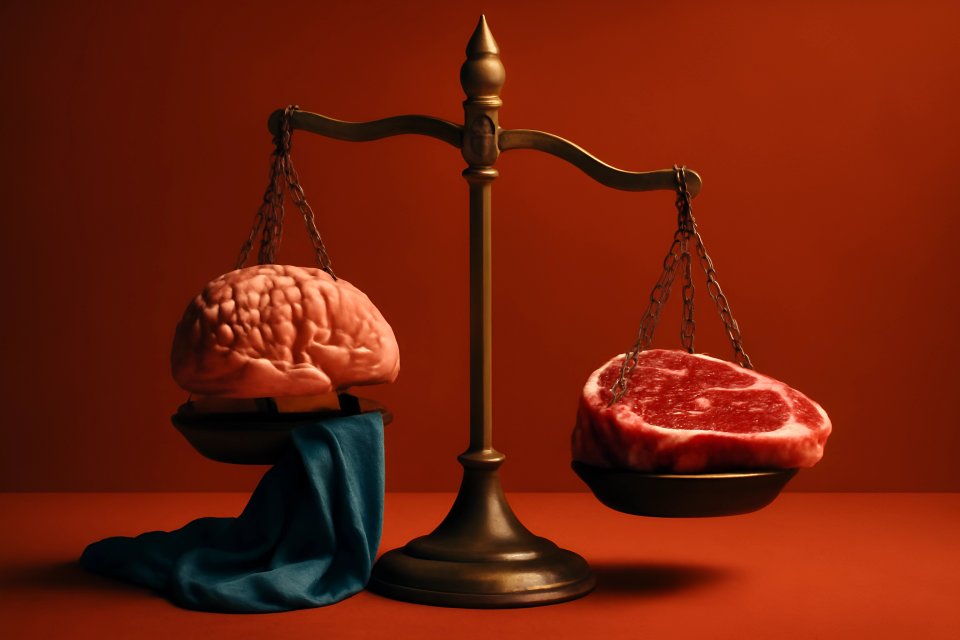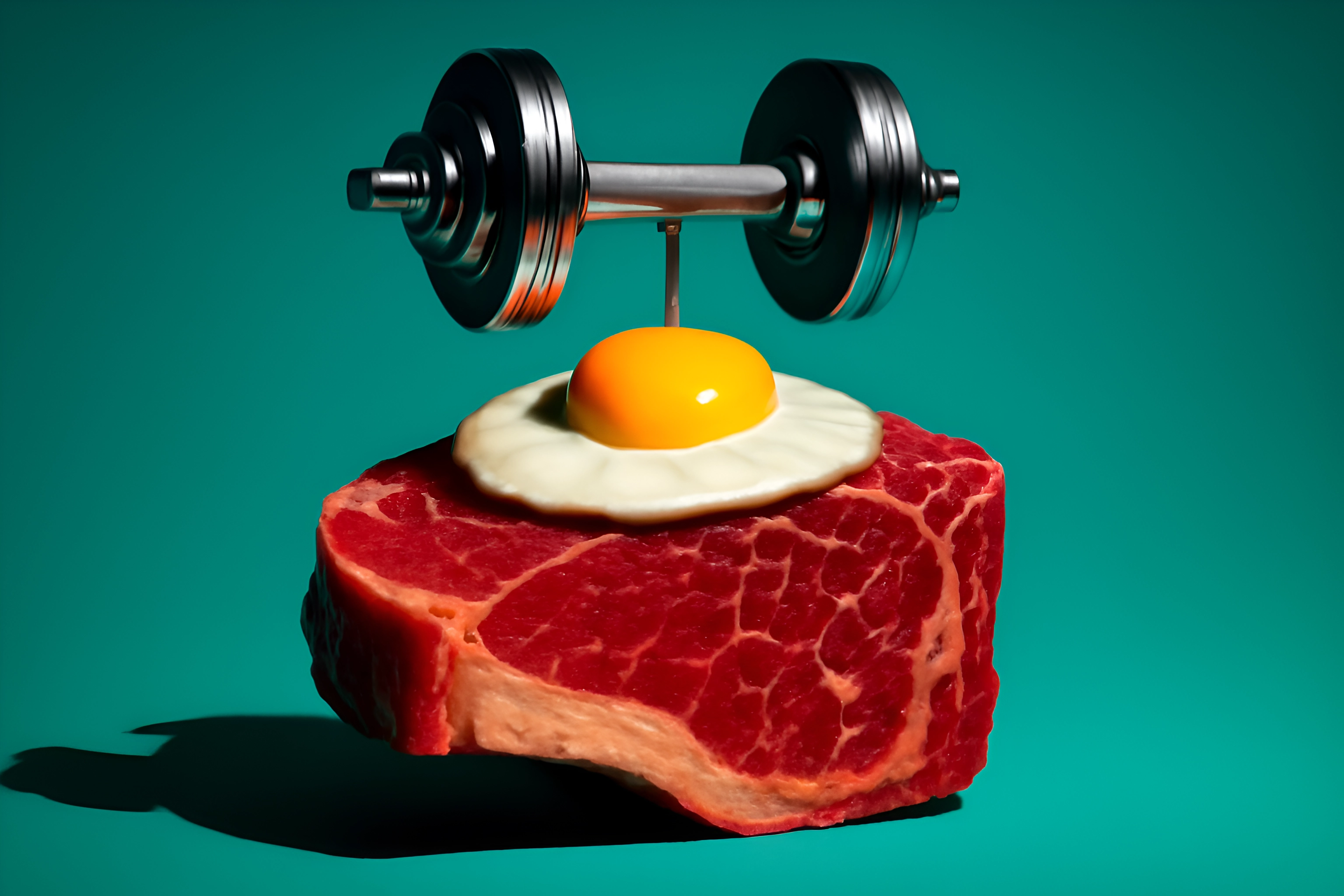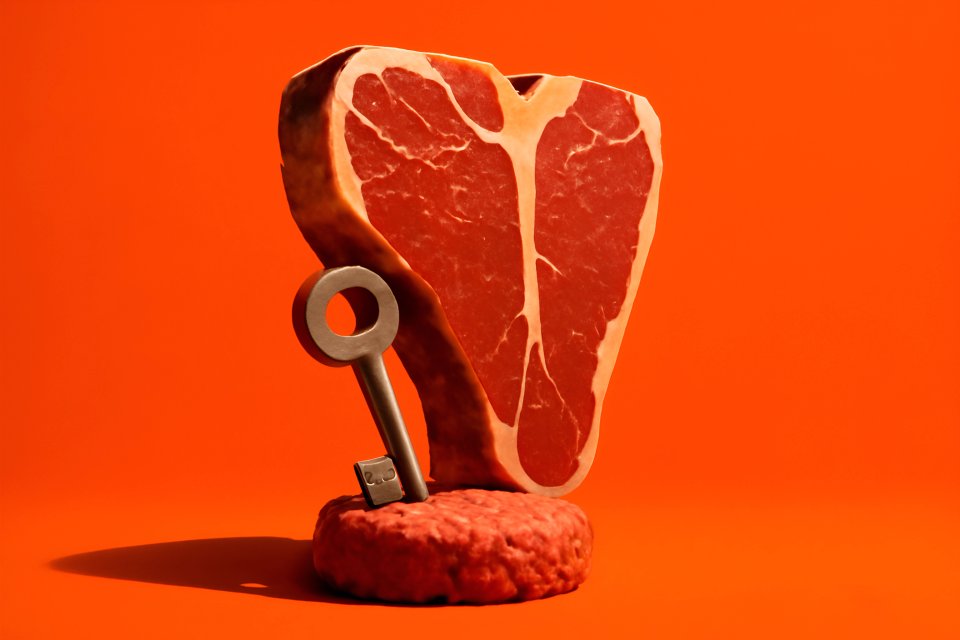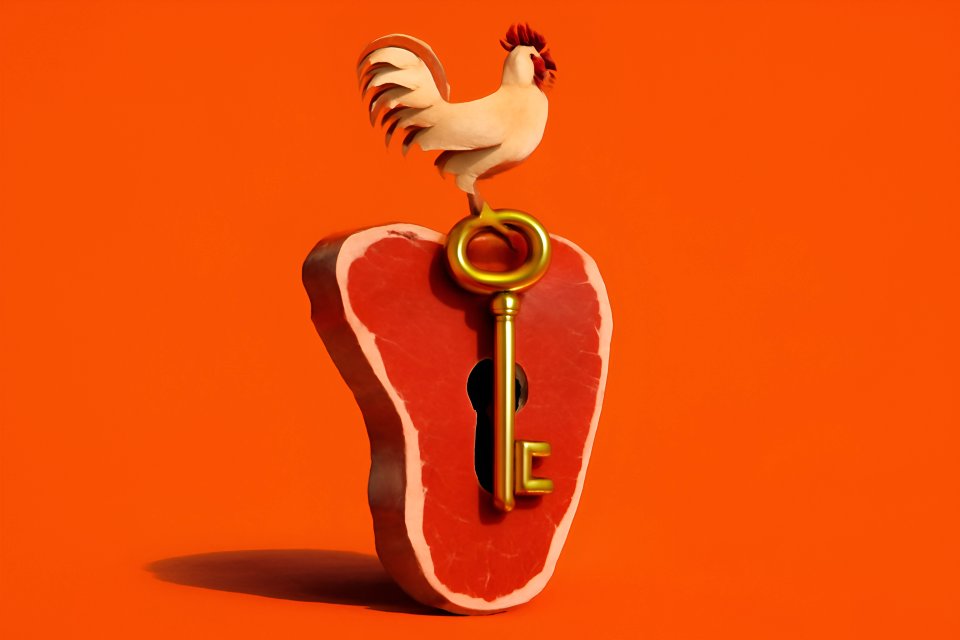
Introduction: Beyond Carnivore—Unlocking the Next Level of Healing
You've embraced the carnivore diet. The brain fog has lifted, inflammation is down, and your energy is more stable than ever before. You feel a sense of control and vitality you thought was lost forever.
But you sense there's another level of healing to unlock, a deeper state of metabolic freedom waiting just beyond the horizon. What's next on this journey of radical self-repair? The answer isn't a new supplement or a complicated biohack; it's an ancient, powerful tool that works in perfect harmony with your new lifestyle: extended fasting.
This is your no-BS guide to safely and effectively incorporating extended fasting into your carnivore routine. We will walk you through the "why," the "how," and the critical pitfalls to avoid. This isn't about deprivation or dogma; it's about listening to your body and using a time-tested strategy to achieve a profound level of healing.
The Perfect Pair: Why Carnivore Makes Extended Fasting Easier and More Effective
Why is a carnivore dieter so uniquely prepared for the challenge and reward of an extended fast? It’s because you’ve already done the hard work of rewiring your metabolism. You’ve laid the perfect foundation for a seamless and powerful fasting experience.
First and foremost, you have achieved pre-existing fat adaptation. You've already taught your body to run efficiently on fat, which means you can sidestep the misery of the "keto flu" that plagues carb-eaters when they attempt to fast. Your body doesn't panic looking for sugar; it simply switches to its preferred, clean-burning fuel source—your own stored body fat.
This metabolic state also grants you stable blood sugar and profound satiety. By eliminating the endless rollercoaster of glucose spikes and crashes, the carnivore diet tames the hunger hormone ghrelin. This means that when you begin your fast, you aren't fighting against ravenous, blood-sugar-driven cravings. Furthermore, you enter a fast from a place of strength, with a body fully stocked with the essential fats, proteins, and bioavailable micronutrients found only in animal foods, a concept we explore in our comparative analysis of carnivore vs. other low-carb diets.
Defining the Terms: Intermittent Fasting vs. Extended Fasting
Before we dive deeper, it's crucial to understand the language we're using. The world of fasting has specific terms, and confusing them can lead to misguided efforts. The two primary concepts you need to grasp are Intermittent Fasting (IF) and Extended Fasting (EF).
Intermittent Fasting is best understood as a daily eating pattern or schedule. This is where you cycle between periods of eating and not eating within a 24-hour window. Common protocols include 16:8 (fasting for 16 hours, eating within an 8-hour window) or OMAD (One Meal a Day). Think of IF as a tool for daily metabolic maintenance.
Extended Fasting, on the other hand, is a more advanced therapeutic tool. It is defined as any fast that lasts longer than 24 consecutive hours, with common durations being 36, 48, or even 72 hours. Unlike IF, extended fasting is not a daily practice; it's a periodic intervention used to trigger deep cellular healing processes that don't fully engage during shorter fasts.
| Feature | Intermittent Fasting (IF) | Extended Fasting (EF) |
|---|---|---|
| Duration | Less than 24 hours (e.g., 16:8, 20:4, OMAD) | More than 24 hours (e.g., 36, 48, 72 hours) |
| Frequency | Daily or most days of the week | Periodically (e.g., monthly, quarterly) |
| Primary Goal | Daily metabolic maintenance, insulin regulation | Deep cellular repair, autophagy, metabolic reset |
| Intensity | Moderate | High (Requires careful preparation) |
The Science-Backed Rewards: The Metabolic Benefits of Fasting on a Carnivore Diet
When you combine the carnivore diet with extended fasting, you don't just add benefits—you multiply them. This powerful duo works synergistically to unlock profound metabolic healing that neither can achieve as effectively on its own. The results are not just anecdotal; they are backed by a growing body of scientific research.
The star of the show is a process called deep autophagy, which literally means "self-eating." Think of it as your body's internal spring-cleaning service, where it identifies and recycles old, damaged, and dysfunctional cellular components. While a carnivore diet reduces the inflammatory load, extended fasting is the most potent natural trigger for autophagy, a process that research suggests peaks after 36-72 hours of fasting.
Beyond cellular cleanup, one of the key metabolic benefits fasting carnivore diet practitioners experience is dramatically enhanced insulin sensitivity. Fasting provides a powerful reset for your metabolism, forcing your body to deplete its glycogen stores and making your cells incredibly responsive to insulin when you do eat again. This is compounded by a surge in Human Growth Hormone (HGH)—studies have shown it can increase by up to 300% during a fast—which helps preserve precious muscle mass while promoting cellular repair. This combination creates an unparalleled environment for healing and achieving the kind of mental clarity that combats brain fog.
Are You Ready? A Pre-Fast Safety Checklist
Embarking on an extended fast is a serious commitment to your health, and it demands respect and preparation. This is not something to be jumped into lightly. Before you even consider fasting for longer than 24 hours, you must be able to answer "yes" to these critical questions.
The most crucial prerequisite is this: You MUST be fully fat-adapted. This is absolutely non-negotiable for your safety and success. This means you should have been consistently following a strict carnivore diet for a minimum of 3-6 months. If you are new to this way of eating, your first priority is to master the fundamentals with our Getting Started on the Carnivore Diet: A Beginner’s Guide.
Next, perform a mindset check. Are you mentally prepared to undertake this journey? Fasting is a tool for deep healing, not a punishment for dietary slip-ups or a desperate crash diet. You must approach it with intention and self-compassion. Plan your first fast for a low-stress period, like a quiet weekend, where you can rest and tune into your body's signals without external pressures. Finally, and most importantly, always consult with a trusted, low-carb-literate healthcare provider before beginning, especially if you have any pre-existing medical conditions, are pregnant or nursing, or are taking any medications.
The Step-by-Step Guide to Your First Carnivore Extended Fast
Ready to begin? This detailed extended fasting with carnivore diet guide will walk you through the three critical phases for a safe and successful experience.
Phase 1: The Pre-Fast Feast (The 24 Hours Before)
Your fast begins long before you stop eating. The final meal you consume is critical for setting you up for success. Focus on a large, high-fat, nutrient-dense carnivore meal to top off your energy stores and provide lasting satiety. Think fatty ribeye steak with butter, a generous portion of fatty salmon, or several eggs cooked in tallow. You can find excellent meal ideas in our guide to ultimate carnivore recipes for inflammation reduction.
In the hours leading up to your fast, prioritize hydration with mineral-rich water. It's also wise to begin supplementing with electrolytes before the fast officially starts. This pre-loading helps prevent the common headaches and fatigue that can occur in the first 24 hours.
Phase 2: During the Fast (The Main Event: 24-72 Hours)
During the fast, your focus shifts to two non-negotiables: water and electrolytes. This is the most critical part of the process. As your insulin levels drop, your kidneys will excrete sodium, and you must actively replace it to feel good.
Your electrolyte protocol should be simple but consistent. A good starting point is a mix of:
Water + high-quality unrefined salt (sodium) + a pinch of a potassium/magnesium supplement
Sip on this mixture throughout the day. The moment you feel a headache, fatigue, or muscle cramp, your first thought should be electrolytes.
A purist fast consists of only water and salt. However, some find that unsweetened black coffee or tea does not negatively impact their fast. For your first time, it's best to stick to the purist method to gauge your body's true response. Most importantly, learn to differentiate between normal, passing hunger waves and true warning signs like severe dizziness, heart palpitations, or extreme weakness. The former is a test of will; the latter is a signal from your body to stop.
Phase 3: Breaking the Fast (How to Refeed Safely)
How you break your fast is just as important as the fast itself. Your digestive system has been dormant, and shocking it with a large, heavy meal can lead to significant discomfort. The number one rule is to start small and gentle.
Your ideal first meal should be a cup of warm, high-quality bone broth. This provides gentle hydration, electrolytes, and gut-healing collagen without overwhelming your system. After drinking the broth, wait 30-60 minutes to see how you feel.
For your second meal, choose a small portion of easily digestible protein and fat. A couple of scrambled eggs, a small piece of flaky fish, or a few spoonfuls of full-fat yogurt are excellent choices. Wait another 1-2 hours before considering a regular-sized carnivore meal. You can find perfect refeed options in our list of 5 gut-healing carnivore recipes.
Common Pitfalls and How to Navigate Them
Even with perfect preparation, you may encounter a few common challenges. Knowing how to navigate them is the key to a successful fast.
The most common issue is the "fasting headache" or a sudden wave of fatigue. In almost every case, the cause is an electrolyte imbalance, specifically low sodium. The solution is simple and immediate: drink a glass of salt water. Proactively sipping on your electrolyte drink throughout the day is the best way to prevent this from happening in the first place.
You will likely experience intense hunger pangs, especially around your normal mealtimes. This is driven by the hormone ghrelin and is usually temporary. Instead of giving in, drink a glass of sparkling water or your salt water and find a distraction. The feeling will almost always pass within 15-20 minutes. If you struggle with poor sleep, it's often due to a natural spike in cortisol. Taking a magnesium supplement before bed, ensuring your room is completely dark, and avoiding screens can significantly improve sleep quality.
Carnivore Extended Fasting: Frequently Asked Questions (FAQ)
How long should my first fast be?
It is highly recommended to start with a 36-hour fast. This allows you to go through a full day-night cycle without food and assess how your body responds. Once you have successfully completed a 36-hour fast, you can consider attempting a 48 or 72-hour fast.
How often can I do an extended fast?
For general health maintenance and metabolic resets, a monthly or quarterly extended fast is a sustainable and effective frequency. Using EF more often should only be done for specific therapeutic goals under the guidance of a knowledgeable practitioner.
Can I exercise while fasting?
Gentle movement like walking or light yoga is encouraged and can help with energy levels. However, you should avoid high-intensity training or heavy resistance lifting. Strenuous exercise places additional stress on the body and is counterproductive during a period of deep rest and repair.
Will I lose muscle mass?
This is a common fear, but it is largely unfounded for fat-adapted individuals. The potent combination of ketosis and the sharp increase in Human Growth Hormone (HGH) during a fast creates a powerful muscle-sparing effect. Your body preferentially burns stored body fat for fuel, preserving your valuable lean tissue.
Conclusion: Your Body, Your Healing Journey
You now have the blueprint. You understand that the carnivore diet provides the perfect metabolic foundation for extended fasting, and that success hinges on diligent electrolyte management and a slow, gentle refeed. This is a powerful, ancestral tool for unlocking a level of health you may have thought was impossible.
Remember, extended fasting is an optional but potent strategy to deepen your healing. It is a personal journey. Listen to your body, honor its signals, and use this tool wisely to break through plateaus and reclaim your vitality.
Have you used extended fasting to supercharge your carnivore journey? Share your experience and tips in the comments below to help our community thrive! And if you're just starting out, ensure you are fully prepared by first mastering the basics with our Carnivore Diet Beginner's Guide.
















